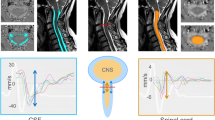Abstract
Background
Hematoma volume is a major determinant of outcome in patients with intracerebral hemorrhage (ICH). Accurate volume measurements are critical for predicting outcome and are thought to be more difficult in patients with oral anticoagulation-related ICH (OAT-ICH) due to a higher frequency of irregular shape. We examined hematoma shape and methods of volume assessment in patients with OAT-ICH.
Methods
We performed a case–control analysis of a prospectively identified cohort of consecutive patients with ICH. We retrospectively reviewed 50 consecutive patients with OAT-ICH and 50 location-matched non-OAT-ICH controls. Two independent readers analyzed CT scans for hematoma shape and volume using both ABC/2 and ABC/3 methods. Readers were blinded to all clinical variables including warfarin status. Gold-standard ICH volumes were determined using validated computer-assisted planimetry.
Results
Within this cohort, median INR in patients with OAT-ICH was 3.2. Initial ICH volume was not significantly different between non-OAT-ICH and OAT-ICH (35 ± 38 cc vs. 53 ± 56 cc, P = 0.4). ICH shape did not differ by anticoagulation status (round shape in 10% of OAT-ICH vs. 16% of non-OAT-ICH, P = 0.5). The ABC/3 calculation underestimated median volume by 9 (3–28) cc, while the ABC/2 calculation did so by 4 (0.8–12) cc.
Conclusions
Hematoma shape was not statistically significantly different in patients with OAT-ICH. Among bedside approaches, the standard ABC/2 method offers reasonable approximation of hematoma volume in OAT-ICH and non-OAT-ICH.
Similar content being viewed by others
References
Broderick JP, Brott TG, Duldner JE, Tomsick T, Huster G. Volume of intracerebral hemorrhage. A powerful and easy-to-use predictor of 30-day mortality. Stroke. 1993;24(7):987–93.
Rost NS, Smith EE, Chang Y, Snider RW, Chanderraj R, Schwab K, et al. Prediction of functional outcome in patients with primary intracerebral hemorrhage: the FUNC score. Stroke. 2008;39(8):2304–9.
Becker KJ, Baxter AB, Cohen WA, Bybee HM, Tirschwell DL, Newell DW, et al. Withdrawal of support in intracerebral hemorrhage may lead to self-fulfilling prophecies. Neurology. 2001;56(6):766–72.
Hemphill JC III, Newman J, Zhao S, Johnston SC. Hospital usage of early do-not-resuscitate orders and outcome after intracerebral hemorrhage. Stroke. 2004;35(5):1130–4.
Hemphill JC III, Bonovich DC, Besmertis L, Manley GT, Johnston SC. The ICH score: a simple, reliable grading scale for intracerebral hemorrhage. Stroke. 2001;32(4):891–7.
Mayer SA, Brun NC, Begtrup K, Broderick J, Davis S, Diringer MN, et al. Efficacy and safety of recombinant activated factor VII for acute intracerebral hemorrhage. N Engl J Med. 2008;358(20):2127–37.
Qureshi AI. Antihypertensive treatment of acute cerebral hemorrhage (ATACH): rationale and design. Neurocrit Care. 2007;6(1):56–66.
Kothari RU, Brott T, Broderick JP, Barsan WG, Sauerbeck LR, Zuccarello M, et al. The ABCs of measuring intracerebral hemorrhage volumes. Stroke. 1996;27(8):1304–5.
Barras CD, Tress BM, Christensen S, MacGregor L, Collins M, Desmond PM, et al. Density and shape as CT predictors of intracerebral hemorrhage growth. Stroke. 2009;40(4):1325–31.
Fujii Y, Tanaka R, Takeuchi S, Koike T, Minakawa T, Sasaki O. Hematoma enlargement in spontaneous intracerebral hemorrhage. J Neurosurg. 1994;80(1):51–7.
Fujii Y, Takeuchi S, Sasaki O, Minakawa T, Tanaka R. Multivariate analysis of predictors of hematoma enlargement in spontaneous intracerebral hemorrhage. Stroke. 1998;29(6):1160–6.
Zhan RY, Tong Y, Shen JF, Lang E, Preul C, Hempelmann RG, et al. Study of clinical features of amyloid angiopathy hemorrhage and hypertensive intracerebral hemorrhage. J Zhejiang Univ Sci. 2004;5(10):1262–9.
Huttner HB, Steiner T, Hartmann M, Kohrmann M, Juettler E, Mueller S, et al. Comparison of ABC/2 estimation technique to computer-assisted planimetric analysis in warfarin-related intracerebral parenchymal hemorrhage. Stroke. 2006;37(2):404–8.
Freeman WD, Barrett KM, Bestic JM, Meschia JF, Broderick DF, Brott TG. Computer-assisted volumetric analysis compared with ABC/2 method for assessing warfarin-related intracranial hemorrhage volumes. Neurocrit Care. 2008;9(3):307–12.
Rosand J, Eckman MH, Knudsen KA, Singer DE, Greenberg SM. The effect of warfarin and intensity of anticoagulation on outcome of intracerebral hemorrhage. Arch Intern Med. 2004;164(8):880–4.
Flibotte JJ, Hagan N, O’Donnell J, Greenberg SM, Rosand J. Warfarin, hematoma expansion, and outcome of intracerebral hemorrhage. Neurology. 2004;63(6):1059–64.
O’Donnell HC, Rosand J, Knudsen KA, Furie KL, Segal AZ, Chiu RI, et al. Apolipoprotein E genotype and the risk of recurrent lobar intracerebral hemorrhage. N Engl J Med. 2000;342(4):240–5.
Levine JM, Snider R, Finkelstein D, Gurol ME, Chanderraj R, Smith EE, et al. Early edema in warfarin-related intracerebral hemorrhage. Neurocrit Care. 2007;7(1):58–63.
Hart RG. What causes intracerebral hemorrhage during warfarin therapy? Neurology. 2000;55(7):907–8.
Mayer SA, Brun NC, Begtrup K, Broderick J, Davis S, Diringer MN, et al. Recombinant activated factor VII for acute intracerebral hemorrhage. N Engl J Med. 2005;352(8):777–85.
Gebel JM, Sila CA, Sloan MA, Granger CB, Weisenberger JP, Green CL, et al. Comparison of the ABC/2 estimation technique to computer-assisted volumetric analysis of intraparenchymal and subdural hematomas complicating the GUSTO-1 trial. Stroke. 1998;29(9):1799–801.
Acknowledgments
Funding was provided by The National Institute of Neurological Disorders and Stroke (NIH R01 NS059727 and K23NS059774), American Heart Association Grant-in-Aid #0755984T, and the Deane Institute for Integrative Study of Atrial Fibrillation and Stroke.
Conflicts of Interest Disclosure
Dr. Goldstein has received consulting fees from CSL Behring and Genentech.
Author information
Authors and Affiliations
Corresponding author
Rights and permissions
About this article
Cite this article
Sheth, K.N., Cushing, T.A., Wendell, L. et al. Comparison of Hematoma Shape and Volume Estimates in Warfarin Versus Non-Warfarin-Related Intracerebral Hemorrhage. Neurocrit Care 12, 30–34 (2010). https://doi.org/10.1007/s12028-009-9296-7
Published:
Issue Date:
DOI: https://doi.org/10.1007/s12028-009-9296-7




